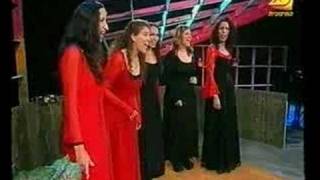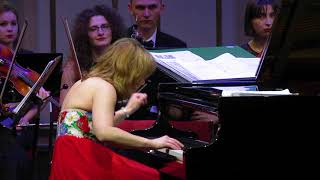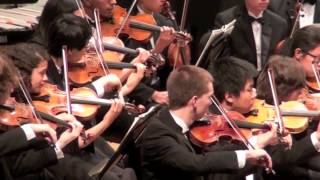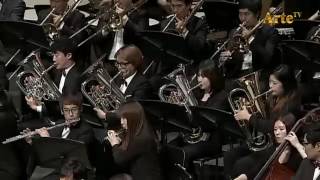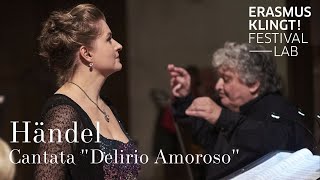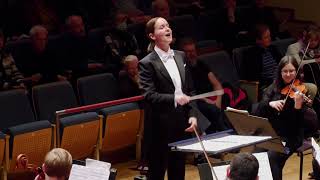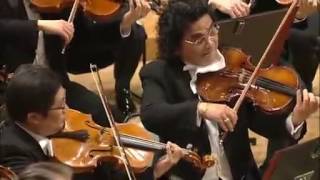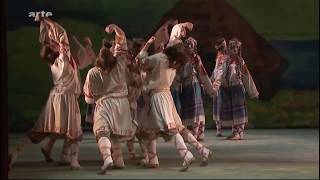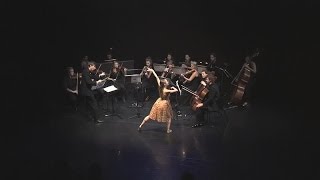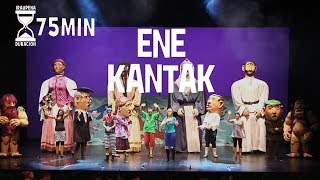Spring begins on March 20th
Recommended music videos for initiation to classical music
Antonio Vivaldi (1678-1741) was an Italian priest, violinist and composer known as the Red Priest (“il prete rosso”). He was born in Venice and as a child he learned to play the violin with his father. At the age of 15 he entered the Seminary and once ordained a priest, he could barely attend to his religious obligations due to his health problems; so he was appointed violin teacher in an orphanage where he gave theoretical and instrumental classes. At the age of 40 he was appointed Chapel Master in Mantua where he wrote his famous Four Seasons , his best-known work. Throughout his life he composed almost 800 works, of which half were concertos, 40 operas, 60 religious works and numerous sonatas.
The Four Seasons , a set of four concertos for violin and orchestra published with descriptive poems for each concerto, is Vivaldi 's most appreciated work and one of the most popular in the history of music .
Today we offer an original version of the first of them, Primavera , performed by the female vocal quintet Carmel A-Cappella .
Franz Xaver Mozart (1791-1844) was an Austrian classical music composer, pianist, conductor and teacher, the younger of two surviving sons of his father, Wolfgang Amadeus Mozart . Franz Xaver was born five months before the death of his father, whom he never met; although he spent his entire life in his father's shadow. From an early age his mother encouraged his musical talent and entrusted him to various teachers; he learned to play the piano and violin and began composing at an early age, working as a professional musician and enjoying moderate success. Unlike his father, he was introverted and very self-critical, belittling his own talent.
The piano is a harmonic musical instrument classified as a struck string instrument; it is composed of a resonance box to which a keyboard has been added through which the steel strings are struck with felt-covered hammers, producing the sound. It was invented around the year 1700 by the Paduan Bartolomeo Cristofori . The word piano derives from the original Italian word for the instrument, pianoforte (piano: "soft" and forte: "loud"); this refers to the piano's ability to produce sounds with different intensities, depending on the weight applied to the keys. This characteristic differentiated it from its predecessors such as the zither, the monochord, the dulcimer, the clavichord and the harpsichord that could only produce a single volume.
Today we offer the third movement of Franz Xaver Wolfgang Mozart's Piano Concerto No. 2 performed by Ukrainian pianist Natalya Pasichnyk accompanied by the International New Symphony Orchestra under the baton of fellow Ukrainian maestro Volodymyr Syvohip .
Gabriel Pierné (1863-1937), born in Metz , was a French organist, composer and conductor. The son of a piano teacher and a singing teacher, he entered the Paris Conservatory , where he sang with César Franck and Jules Massenet. In 1882 he won first prize for organ and second prize for the Grand Prix de Rome , with the cantata Edith . At the Conservatory he met Claude Debussy , with whom he would always have a strong bond. In the field of conducting he gained a great reputation, while as a composer he tackled all genres with equal success, including works dedicated to the Basque Country such as Ramuntxo or the Fantaisie basque for violin and orchestra; also notable are his oratorios, his symphonic poems and his numerous comic operettas, as well as his ballet works.
Ramuntcho is an incidental score written by Gabriel Pierné in 1908 for a stage version of Pierre Loti 's 1897 novel Ramuntcho , which was presented at the Théâtre de l'Odéon in Paris . In 1910, Pierné arranged the music into two orchestral suites, from which we now offer his Overture , or Rhapsody on Basque Themes . Although the composition of the original work often reaches melancholic sensations, like Basque music in general, in this multicoloured overture that sensation is enriched by joyful popular dance rhythms, one of whose protagonists is the quintuple rhythm of the zortziko , which was a novelty in European music at the time. Today we can see it thanks to the Cincinnati Symphony Youth Orchestra conducted by maestro William C. White.
Philip Sparke (1951) is an English composer who studied trumpet, piano and composition at the Royal College of Music in London . His compositions, which revolve around brass bands and brass bands, are known throughout the world and have received important awards.
Navigation in . Among the most popular events in the British brass band calendar are the Whit Friday marches. On a Friday evening, usually in May or June, the country's best bands gather in the picturesque villages around Saddleworth Moor to compete in these close-fought outdoor marching competitions. The events are steeped in tradition and the most famous brass band marches can be heard well into the night as the bands try to visit as many villages as possible.
Ian Gibson is the landlord of the Navigation Inn , a pub that is a popular meeting place for brass band musicians and celebrates his love of brass bands with memorabilia and historic photographs on the walls. Every year, he brings together a band of the best brass band musicians in the country to form the Navigation Brass , specifically to take part in the Good Friday competitions. He commissioned this march for that purpose, hoping that it would showcase the skills of his carefully selected musicians to the full.
The arrangement for concert band was made by the composer in 2000. In the traditional style of a pageant march, Navigation Inn begins with a flourish that moves chromatically away from the key of G minor until it suddenly snaps back to its original place as the main theme appears. All the ingredients are there: a bridge passage, a return of the main theme and a "bass" note before the trio section changes the tone to one of optimism that ends the march on a high note. (Excerpted from Philip Sparke's website )
Today we offer the Navigation in March performed by the Sejong Wind Orchestra conducted by maestro Cheol-Woong Lee .
Recommended classical music videos
Georg Friedrich Haendel ( 1685-1759) was born in Halle , Germany. He became a naturalised Englishman and is one of the greatest figures in the history of music , including the Baroque. As a child he began to receive harmony and counterpoint lessons from Friedrich Zachow , organist in Halle , with whom he also learned to play the oboe, violin and organ. At the age of 18 he moved to Hamburg, where he wrote his first two operas. After three years he travelled to Florence and then to Rome . In 1710 he returned to Germany and from there to London , where he settled for life. Despite the total silence with which he protected his privacy, his homosexuality seems clear. Of his abundant musical production, we must highlight the Oratorio The Messiah , one of the masterpieces of history . He died at his home at the age of 74.
The catalogue of works by Georg Friedrich Händel, known by the acronym HWV , stands for Handel Werke Verzeichnis (in German, Catalogue of Handel's Works). It is not arranged chronologically but thematically, by type of work or genre and according to its vocal or instrumental nature. It covers 612 works plus 25 supplements and doubtful and lost works, and was compiled between 1978 and 1986 in three volumes. The exact number of compositions is therefore difficult to specify. Its author is the musicologist Bernd Baselt .
Il Delirio Amoroso, HWV 99. Written in 1707 to a libretto by Cardinal Pamphili , a poet and patron of the Arcadian circle, this cantata in the form of an opera seria tells the love story of Tirsi and Cloris . The young Handel displays vocal and instrumental virtuosity and gives the violin, the oboe, the flute or the cello solo roles. The adventures of these two shepherds allow us to stage antiquity and revisit the myth of Orpheus in hell, but this time it is the shepherdess Clori who goes to hell to reunite with her beloved Tirsi . The ungrateful lover rejects her once again before she pulls him from the banks of the Styx . (Extracted from an article by Ophélie Gaillard)
Today's performance is offered by Ukrainian soprano Kateryna Kasper with the Freiburger Barockorchester conducted by Flemish maestro René Jacobs .
Franz Joseph Haydn (1732-1809), Austrian composer whose brother Michael Haydn was also a notable composer, was one of the main pillars on which classicism was based (1750-1810). At the age of six he began his studies of harpsichord and violin. At the age of eight he was admitted as a chorister at St. Stephen's Cathedral in Vienna where he continued his musical studies. After his voice lost, he had to survive by working various jobs, while studying composition by analyzing the works of Carl Philipp Emanuel Bach . He maintained a close friendship with Mozart and was Beethoven 's teacher. He laid the main foundations of the sonata form and the formal structure of the string quartet and the symphony . He died at the age of 77 in Vienna .
The catalogue of Haydn's works . The works of Joseph Haydn are now classified according to the system devised by Anthony van Hoboken. Each work is identified by a Roman numeral corresponding to the category, which in most cases is identified by a genre. Some categories have subdivisions, which are indicated by a lower-case letter followed by an Arabic numeral corresponding to the order of the particular work within the category. These numerals are preceded by the word Hoboken (in memory of the author of the catalogue) and sometimes by Hob (his abbreviation).
Die Jahreszeiten (The Seasons ) Hob. XXI. 3 Haydn was spurred to write this oratorio by the great success of his previous oratorio The Creation (1798), which had become very popular and was being performed all over Europe. Like The Creation, The Seasons was conceived as a bilingual work; since Haydn was very popular in England (especially after his visits there in 1791–92 and 1794–95), he wished the work to be performable in both English and German, so it took Haydn two years to complete the work. The Seasons is scored for a fairly large orchestra, a chorus singing mainly four voices, and three vocal soloists: the same as in The Creation .
The oratorio is divided into four parts corresponding to Spring, Summer, Autumn and Winter , with the usual recitatives, arias, choruses and ensemble numbers. Today we offer the first part, Spring , in a version by the Octopus Symphony Chorus accompanied by the Le Concert d'Anvers orchestra conducted by maestro Bart Van Reyn .
Emilie Mayer (1812–1883) was a German composer and sculptor of the Romantic period. Although she began her composition studies relatively late in life, she was a prolific composer who was widely regarded throughout Europe during her lifetime, composing at least eight major symphonies, fifteen concert overtures and a great deal of chamber music. On 28 August 1840 her life took a shocking turn when her father shot himself, ending his life on the 26th anniversary of the death of Emilie Mayer 's mother. The siblings were forced to leave home. Author Marie Silling wrote of the event: "The death of her father caused her first great and profound grief; in order to numb this pain she buried herself in work."
An overture is an instrumental introduction to an opera or other dramatic work, whether musical or not; although some independent instrumental compositions of the 19th and 20th centuries were also called overtures by their composers. The earliest operas, dating from the early 17th century , did not have overtures but did have an introduction by the vocalists in which they summarized the action that was to follow. Instrumental introductions began to be used regularly in the mid -17th century ; the German composer Christoph Willibald Gluck was one of the first to use material from his operas for overtures. In this way, they established the emotional profile of the opera that followed.
Today the University of Gothenburg Symphony Orchestra conducted by Polish maestro Magdalena Pawlisz offers us the Overture in D major, op. 84 by Emilie Mayer .
Yasushi Akutagawa (1925 – 1989) was a Japanese composer and conductor, the son of writer Ryūnosuke Akutagawa . Among other awards, he won the 1978 Japan Academy Film Award for his music for the films Hakkōda-san and Yatsuhaka Mura . Akutagawa learned orchestral composition at the Tokyo National University of Fine Arts and Music . In 1954, when Japan had no diplomatic relations with the Soviet Union , he entered the country illegally, where he befriended Dmitri Shostakovich, Aram Khachaturian and Dmitri Borisovich Kabalevski . He was the only Japanese composer allowed to publish his works in the Soviet Union at the time. He was also a popular emcee on Japanese television. As an educator, he conducted an amateur orchestra, Shin Kokyo Gakudan . After his death in 1990, the Akutagawa Composition Prize was established in his memory.
Today we present his Triptych for string orchestra articulated in three movements (I (0´00´´) ALLEGRO .-. II (4´14´´) BERCEUSE, ANDANTE .-. III (9´58´´) PRESTO) and performed by the instrumental ensemble Durare Chamber String Ensemble .
Recommended music videos for all tastes
Modern Jazz Quartet was an American jazz group, representative of the cool style , which developed its career between 1952 and 1993. Although it made various forays into classical music, the group's repertoire soon focused on cool .
Cool jazz is a musical genre that developed during the 1950s; chronologically, it follows bebop and is contemporary with hard bop. The style adopted, very early on, the alternative name of West Coast jazz , because most of the musicians who played it were based on the West Coast of the United States (basically California). It is characterized by its smooth style, slow tempo and controlled improvisation, mainly in relation to the fast and aggressive character of the bebop that preceded it. Often, its arrangements and interpretations incorporate elements of Western academic music.
Alejandra Guzmán (Mexico City, February 9, 1968), daughter of the Venezuelan rock and roll singer and actor Enrique Guzmán and the Mexican actress Silvia Pinal , is a Mexican singer, who has ventured into acting in soap operas, series and television programs. At the age of 8, she began taking ballet, tap and jazz classes. She experimented with fine arts, such as dance and painting. She participated in soap operas such as Cuando los hijos se van and Tiempo de Amar , and in the musical work Mame alongside her mother. She met the Mexican rocker Kenny, vocalist of the band Kenny y los Eléctricos and participated with her doing the choruses in her presentations and it was she who gave her her first professional opportunity. Her debut, as a solo singer, took place on the program Siempre en Domingo with her song " Bye mamá ". It is estimated that she has sold more than thirty million records since her debut, making her one of the best-selling Latin singers; she is recognized in Latin America , the United States and Europe .
Seeed (1998) German reggae band, composed of three singers, eight instrumentalists and a DJ , who use a wide range of instruments in their compositions. Their influences range from reggae to rap and hip hop , covering several styles. In 2001 they released their first album, which made them popular in the German media; in 2003 they released their second album with a version for the German public and a second version for foreign consumption. Since then they have obtained 5 gold records, have been awarded with important prizes and have participated in renowned national and international festivals.
Angélique Kidjo (1960) is a four-time Grammy- nominated African singer-songwriter known for her diverse musical influences and her creativity in music videos. She was born in Ouidah, Benin , and from the age of six was part of her mother's theater troupe. This background allowed her to enjoy an early appreciation of music and dance; however, constant political conflicts in Benin forced her to emigrate to Paris , in 1982. She began as a backing singer in local bands before starting her own band in the 1980s. Today she is one of the most recognized live singers in Paris .
Recommended peculiar videos
Igor Stravinsky (1882-1971) was a Russian pianist, conductor and composer; for many critics, the most important of the 20th century . During his long life he delved into different musical styles and genres from post-romanticism to serialism or jazz . He studied, among others, with Rimsky Korsakov and worked for different genres and musical groups; but after meeting Sergei Diaghilev , founder of the Ballets Russes , he collaborated closely with him and so it was with his ballets that he achieved greater fame and influence. Among all his ballets we must highlight " The Rite of Spring ", for many, the greatest work of the 20th century ; despite the fact that its premiere was an absolute scandal full of protests and even punches among the public. Time magazine considered him one of the most influential personalities of the 20th century .
Le Sacre du printemps (The Rite of Spring) is a ballet by Stravinsky written for the 1913 Paris season of the Ballets Russes company; the original choreography was by Vaslav Nijinsky , with sets and costumes by Nicholas Roerich . Its premiere at the Théâtre des Champs-Élysées caused a sensation and a riot among the audience due to the avant-garde character of the music and choreography. The concept that Roerich developed from Stravinsky 's idea is suggested by its subtitle, " Pictures of Pagan Russia in Two Parts ." The work describes the story, which took place in ancient Russia , of the abduction and pagan sacrifice of a maiden at the beginning of spring, who was to dance until her death. Today it is presented to us by the Mariinsky Theatre Ballet and Orchestra under the baton of maestro Valery Gergiev .
Structure . The composition is structured in two parts as follows: First part, Adoration of the Earth : I (4´35´´) INTRODUCTION (Lento. Più Mosso. Tempo I) .-. II (7´40´´) SPRING OMENS. DANCE OF THE ADOLESCENTS (Tempo giusto) .-. III (11´00 ´) GAME OF THE ABDUCTION (Presto) .-. IV (12´12´´) SPRING ROUNDS (Tranquillo. Sostenuto e pesante. Vivo. Tranquillo) .-. V (16´05´´) GAME OF THE RIVAL TRIBES (Molto allegro) .-. VI (17´48´´) COURTSHIP OF THE WISE MAN .-. VII (18´33´´) ADORATION OF THE EARTH (The Wise) (Slow).-. VIII (18´55´´) DANCE OF THE EARTH (Prestissimo) .-.
Second part, The sacrifice: I (20´02´´) INTRODUCTION (Slow) .-. II (24´19´´) MYSTERIOUS CIRCLES OF TEENAGERS (Andante con moto - Più Mosso - Tempo I) .-. III (27´34´´) GLORIFICATION OF THE CHOSEN ONE (Vivo) .-. IV (29´06´´) EVOCATION OF THE ANCESTORS .-. V (29´59´´) RITUAL ACTION OF THE ANCESTORS (Slow); VI (33´31´´) SACRED DANCE (The Chosen One) (Allegro). Today it is offered to us by the Mariinsky Theatre Ballet and Orchestra under the baton of the eminent maestro Valery Gergiev .
Aaron Copland (1900-1990) was an American classical music and film composer of Russian-Jewish origin. His work is influenced by Impressionism and especially by Igor Stravinsky . He stood out alongside George Gershwin as one of the most important composers of the musical identity of the United States in the twentieth century . In the fall of 1917 he began studying harmony and counterpoint with Rubin Goldmark ; at his suggestion, he studied piano first with Victor Wittgenstein and from 1919 with the famous pedagogue Clarence Adler . In June 1921 he moved to France to study with Nadia Boulanger ; in 1924 he returned to the USA and the following year he was the first composer to receive the Guggenheim Fellowship , which he renewed in 1926.
In 1945, Copland received the Pulitzer Prize for music and the New York Music Critics Award for his ballet Appalachian Spring , which is presented today by the dancer Nancy Osbaldeston accompanied by the Constella Orchestra .
Dances in Bulgaria . Bulgarian dances are distinguished by their subtle rhythms and intricate footwork. In some dances, dancers repeat the same pattern of steps throughout the dance, while in other dances with several different steps, the leader announces step changes at his or her discretion. Still others have one basic step that individual dancers can embellish at specific points with variations such as stamping and clapping. In dances where the line moves to the right or left, the dancer at the head of the line is the "leader." It is his or her responsibility to lead the line so that it does not collide with other lines.
Ensemble Bulgare is the largest private professional folklore ensemble in Bulgaria . Since its establishment in 2002, it has toured 24 countries with nearly 2,500 performances. Today we are offering a selection from the show This is Bulgaria .
Samba is a musical genre with African roots that emerged in Brazil , from which a type of dance is derived. It is one of the main manifestations of Brazilian popular culture and a symbol of national identity. (It should not be confused with Zamba , a completely different musical genre of Argentine origin). Although in some countries the female voice is used (the samba), in Brazil and in some countries such as Argentina and Uruguay , the male voice is used ( the samba ). It was in the former capital of Brazil where the dance of the freed slaves came into contact with other musical genres and incorporated them, acquiring a unique character. In this way, it was the samba carioca that achieved the status of symbol of Brazilian national identity, spreading throughout Brazil , associated with Carnival .
Recommended music videos for children
Various Wikipedia articles have been used to write these texts.
The texts of Videomusicalis are written in Basque, Spanish and English.





